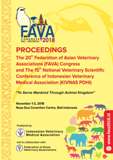PCS-10 The Features of Seminiferous Tubule Cells in Rat Testicular Dysfunction Induce by Secretome Based On Cytoskeletal Protein Profile
Abstract
Secretome is a factor found in the stem cell culture medium. This factor may repair the tissues of the organs that were damaged by various degenerative disorders1. A previous study has reported that secretome derived from the fetal human umbilical cord mesenchymal stem cell (HUC-MSC) may be an effective regenerative agent for β-cell pancreatic regeneration in Type 1 diabetes mellitus and for skin regeneration in incisional and burn wound healing.
The administration of cisplatin as a chemotherapeutic agent is limited because it causes side effects, such as reproductive toxicity and progresses to testicular dysfunction2. As a degenerative disorder, testicular dysfunction is characterized by failure in the synthesis of reproductive hormones and spermatogenesis. Cisplatin-induced testicular cell damage would promote vimentin and cytokeratin localization in the spermatogenic, Sertoli, and Leydig cells.
Studies on the use of secretome in promoting the recovery of various degenerative disorders and its effects on the spermatogenesis of rats with cisplatin-induced testicular dysfunction have not been conducted. The aim of this stud was to investigate the effect of secretome derived from HUC-MSC on cisplatin-induced testicular dysfunction in rats.

